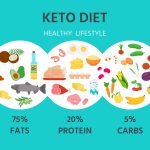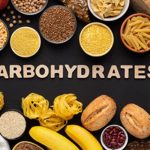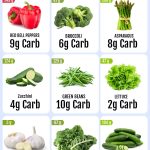The Dietary Approaches to Stop Hypertension (DASH) diet is well-known for its heart-healthy and blood pressure-lowering benefits. This evidence-based dietary plan emphasizes the consumption of nutrient-rich foods while limiting certain less healthy options. In this article, we’ll explore what you cannot eat on the DASH diet, helping you make informed choices for a healthier lifestyle.
The DASH Diet: A Brief Overview
The DASH diet is a dietary plan developed to prevent and manage hypertension (high blood pressure) through strategic food choices. It places a strong emphasis on consuming foods that are rich in essential nutrients like potassium, calcium, magnesium, and fiber. Simultaneously, it discourages the intake of sodium (salt) and certain other types of less healthy foods. The primary goal is to establish a balanced and heart-healthy way of eating.
Foods to Avoid on the DASH Diet
1. High-Sodium Foods:
Sodium reduction is a central focus of the DASH diet. High-sodium foods are to be avoided or significantly limited. These include:
- Processed Foods: Many processed foods, including canned soups, sauces, and packaged snacks, are laden with excess sodium. Always check labels for sodium content, and opt for low-sodium or sodium-free alternatives.
- Fast Food: Most fast food items are notoriously high in salt. This includes items like burgers, fries, and fried chicken. Opt for healthier, lower-sodium choices if dining out.
- Deli and Cured Meats: Deli meats (cold cuts) such as ham, salami, and bologna, as well as cured meats like bacon and hot dogs, are high in sodium. Whenever possible, choose fresh, lean meats or lower-sodium versions.
- Pickled and Brined Foods: Pickles, olives, and other brined or salt-preserved foods are also sodium-rich. If you enjoy these foods, opt for reduced-sodium varieties or consume them in moderation.
2. High-Sugar Foods:
While sugar is not the primary focus of the DASH diet, it’s wise to reduce your intake of high-sugar foods. These include:
- Sugary Beverages: Soda, fruit juices, energy drinks, and sweetened teas are often loaded with added sugars. Opt for water, herbal teas, or unsweetened alternatives.
- Candy and Sweets: Confectionery items like candy, cookies, and pastries tend to be high in sugar and low in nutrients. Limit your consumption of these treats.
- Sweetened Cereals and Desserts: Breakfast cereals and desserts like cakes and pies can contain excessive amounts of sugar. When possible, choose whole-grain cereals with little to no added sugar and opt for healthier dessert options.
3. Foods High in Saturated Fats:
The DASH diet encourages the reduction of saturated fats. These fats are often found in:
- Red and Processed Meats: Meats like beef, pork, and processed meats such as sausages are sources of saturated fat. Consider leaner cuts and moderation when including these in your diet.
- Full-Fat Dairy Products: Whole milk, butter, cheese, and cream are high in saturated fats. Choose low-fat or fat-free dairy options instead.
- Solid Fats: Foods cooked in or with solid fats like lard or shortening, such as many fried foods, are best minimized or avoided.
Unlocking the Potential of Fungi: Probiotic Effects on Gut Health
External Links
For additional information and resources related to the DASH diet and heart-healthy eating, consider exploring these external links:
- National Heart, Lung, and Blood Institute – DASH Eating Plan
- American Heart Association – Reducing Salt in Your Diet
Frequently Asked Questions
1. Can I still enjoy flavor on the DASH diet?
Absolutely! The DASH diet encourages the use of herbs, spices, and other flavor-enhancing ingredients to make your meals tasty and satisfying without relying on excessive salt or sugar.
2. Can I eat out while following the DASH diet?
Eating out can be challenging, but many restaurants offer healthier options with lower sodium and saturated fat. You can also ask for adjustments to your meal, like less salt or sauce on the side.
3. Will the DASH diet help with weight loss?
While weight loss is not the primary focus of the DASH diet, it often occurs as a result of making healthier food choices. Combining DASH with portion control can help you achieve and maintain a healthy weight.
4. Is the DASH diet suitable for everyone?
The DASH diet is generally considered safe for most individuals. However, it’s essential to consult with a healthcare professional, especially if you have specific dietary restrictions or health concerns.
Conclusion
The DASH diet is an effective dietary plan that promotes heart health and lowers blood pressure. By understanding what foods to avoid, such as high-sodium, high-sugar, and high-saturated fat options, you can make conscious choices to improve your overall well-being. The DASH diet is not about deprivation but rather about embracing a balanced and nutritious way of eating that benefits your health in the long run.










